

Leaders That Listen Public Speaking Curriculum
Debate guide.

Debate is an engaging and rigorous way to explore issues that directly impact society -- it also trains your brain to listen carefully, which is important for leaders! When done well, debate can be used to develop empathy, perspective-taking, and productive conflict by teaching people how to navigate difference and interrogate ideas (as opposed to personal attacks). This toolkit is an introduction to debate protocols and argumentation skills, as well as how to judge debate, how to run a debate practice, and even how to start a debate team. Whether you are involved in formal debate, these resources can help you improve your spontaneous speaking and ability to persuade an audience!
Categories legend.

Resource 1: Debate: Listening Like a Leader
This essay discusses how debate can be used to develop empathy and promote listening.

Resource 2: Using Debate to Navigate Difference
This essay discusses why debate can be exclusionary and inaccessible, unless taught using inclusive methods to navigate difference.

Resource 3: Debate Team Stories: Memories from the Author
The author shares experiences helping a middle school student create a debate team to address issues of diversity and equity.
Resource 4: Getting Debate Started: For Educators and Facilitators
This one-pager contains 6 personal checkpoints for helping people improve their debate skills.
Resource 5: Getting Debate Started: For Speakers
This one-pager contains 6 personal checkpoints to help speakers prioritize key skills to develop in debate.
Resource 6: Getting Debate Started: For Listeners
This one-pager contains 6 personal checkpoints to help people provide better feedback to help debaters improve.
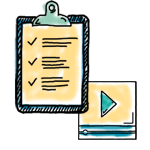
Resource 7: Designing Debates
Use this resource to create different debate formats utilizing six common protocol elements.
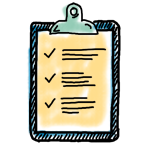
Resource 8: Structuring Arguments on the Spot
These tips guide how to analyze topics, outline arguments, diversify arguments, and generate sufficient offense and defense.
Resource 9: Tips for Anticipating and Responding to Arguments
Use this resource to respond to arguments in a debate in a clear, well-organized manner.
Resource 10: The Art of Synthesis and Summary
Use these tips to practice strong closing speeches that summarize key points in a passionate, compelling way.

Resource 11: Parliamentary Debate Format
This resource covers the basics of a spontaneous debate format modeled after British parliamentary procedure.
Resource 12: Moral Judgment Debate Format
This resource covers a classroom method for discussing and debating philosophical questions.

Resource 13: Debate Skill Drills and Warm-Ups
These 8 short activities can be used as drills and warm-ups to focus on specific skills used in debate.
Resource 14: Activity Examples: SPAR and Extemporaneous Panels
Practice argumentation skills through standards-based activities using these protocols for panels and mini-debates.
Resource 15: Class Project: Debate Scrimmages Assignment Sheet
This assignment sheet describes how to run a culminating debate “tournament” to assess debate skills.
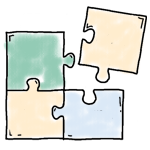
Resource 16: Debate Rubric for Outside Judges
This instruction sheet and example ballot can be used for guest judges for a debate tournament.
Resource 17: Community Change Idea: Creating a Debate Team
This extensive checklist outlines what is required to start a debate team.

Resource 18: Project Sketcher
This planning tool and calendar help organize public speaking project goals and prioritize specific skills and milestones.
- My Storyboards
Debate Worksheet Templates
Customize debate worksheet templates.
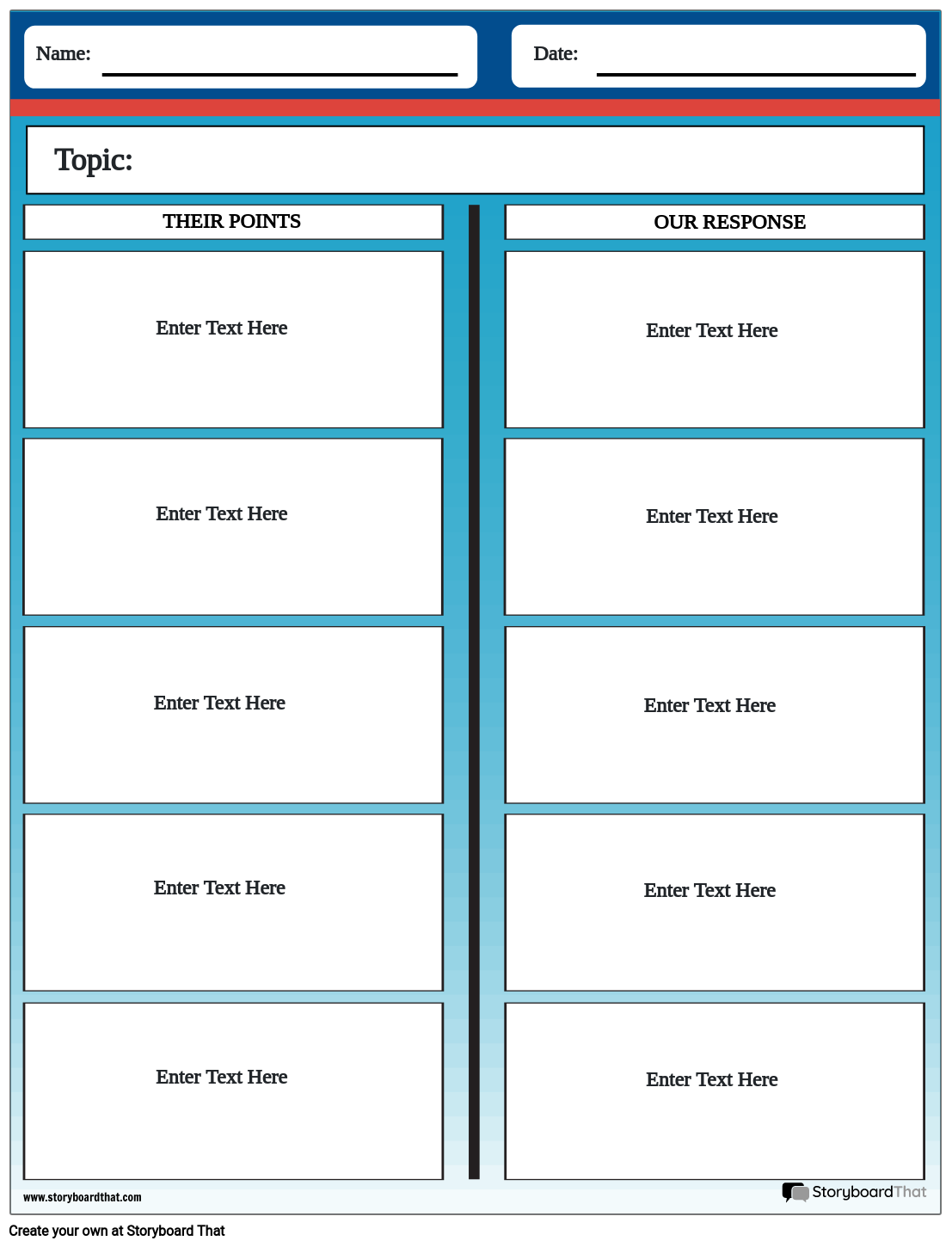
If you're assigning this to your students, copy the worksheet to your account and save. When creating an assignment, just select it as a template!
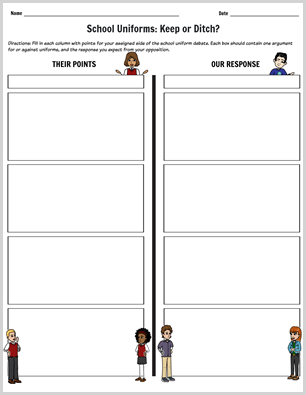
What is a Debate?
Debating is a valuable skill that can help students develop higher-level thinking and argumentation skills. By participating in debates, students can learn to organize their thoughts, research topics, and present their arguments in a clear and convincing manner. However, preparing for a debate can be challenging, especially for young learners. To help students prepare for debates, teachers can use a variety of resources such as graphic organizers, templates, and task cards.
What is a Debate Worksheet?
A debate worksheet is a planning document for a debate. Most debate preparations use evidence cards, flow sheets, and constructive speech templates but teachers have the option to create their own type of debate preparation worksheet.
Debate Graphic Organizers
One way to help students organize their thoughts and arguments is by using debate graphic organizers. These organizers can help students map out their arguments and counter-arguments, as well as identify evidence to support their claims. Some examples of debate graphic organizers include:
- T-Chart: These types of debate worksheet templates allow students to compare and contrast two opposing viewpoints, with one viewpoint on each side of the chart.
- Venn Diagram: This organizer helps students identify similarities and differences between two opposing viewpoints.
- Spider Map: This organizer allows students to brainstorm ideas and arguments related to a particular debate topic.
Debate Templates for Students
Another useful resource for preparing students for debates is debate templates. These templates provide students with a structured format for organizing their arguments and notes. Some examples of debate templates include:
- Debate Prep Worksheet: This template guides students through the process of researching and preparing for a debate.
- Debate Notes Template: This template provides students with a space to take notes on their research and arguments.
- Debate Preparation Worksheet: This template helps students organize their arguments and counter-arguments before the actual debate.
- Debate Planning Sheet: To help students prepare for the actual debate, teachers can provide them with a debate planning sheet. This sheet includes the debate format, rules, and guidelines, as well as the debate topics and argument assignments. Students can use this sheet to plan their arguments and prepare their speaking notes.
Using these templates in actual debate scenarios is very helpful. During the actual debate, students can use their notes and outlines to present their arguments and respond to their opponents' arguments. By participating in actual debates in the classroom, students can practice their debating skills, higher level thinking capabilities and improve their overall ability to articulate their opinions.
Why Are Debate Sheets Important and How Are They Best Used?
Debates are an important way to share ideas and to critically analyze information. Debates challenge speakers to carefully research both sides of a topic or question, and come up with solid evidence to support their chosen side, while at the same time anticipating problems and providing solutions. Students may find these skills will also help them in persuasive writing and research papers. Debates also encourage public speaking skills and careful listening skills.
There are many resources available online that teachers can use to help students prepare for debates. These resources include different types of debate worksheets, graphic organizers, templates, task cards, and planning sheets. By providing students with these resources, teachers can help students organize their thoughts, research topics, and present their arguments in a clear and convincing manner. Debating is a valuable skill that can help students develop higher-level thinking and argumentation skills, and these resources can help young learners develop these skills.
Planning: A Debate Outline Example
Knowing how to write an outline for a debate may not come naturally but by following these steps, you can create a strong debate outline example template that will help you to deliver a convincing argument. Remember to keep your arguments organized and supported by evidence, anticipate the opposing side's arguments, and use transition words to ensure a smooth flow of ideas.
- Choose a Debate Topic: The first step in making a debate outline is to choose a topic. Make sure the topic is debatable and has clear arguments on both sides.
- Research the Topic: Conduct thorough research on the topic to understand the different viewpoints and arguments. Gather evidence and data to support your position.
- Identify Key Arguments: Identify the key arguments for your side of the debate. These arguments should be supported by evidence and should be able to counter the opposing side's arguments.
- Organize the Arguments: Organize the arguments in a logical order. Start with the strongest argument, followed by the next strongest, and so on. Ensure that each argument flows smoothly into the next.
- Include Rebuttals: Anticipate the opposing side's arguments and include rebuttals for each of them. Address each point the opposing side is likely to make and refute them with strong evidence.
- Add Transitions: Use transition words and phrases to help your speech flow smoothly from one argument to the next. Examples of transition words include "furthermore," "in addition," and "however."
- Include an Introduction and Conclusion: Begin your outline with a strong introduction that captures the audience's attention and presents your stance. End with a powerful conclusion that restates your main arguments and leaves a lasting impression on the audience.
- Practice: Practice delivering your speech using the outline. Ensure that you stick to the time limit and that your arguments are clear and concise.
How to Make a Debate Worksheet
Choose one of the debate outline templates.
We have lots of templates to choose from. Take a look at our example for inspiration!
Click on "Copy Template"
Once you do this, you will be directed to the storyboard creator.
Give Your Worksheet a Name!
Be sure to call it something related to the topic so that you can easily find it in the future.
Edit Your Worksheet
This is where you will include directions, specific questions and images, and make any aesthetic changes that you would like. The options are endless!
Click "Save and Exit"
When you are finished with your worksheet, click this button in the lower right hand corner to exit your storyboard.
From here you can print, download as a PDF, attach it to an assignment and use it digitally, and more!
Even More Storyboard That Resources and Free Printables
- Cornell Notes Template
- Discussion Worksheets
- Critical Analysis Essay Outlines
- First Day of School Worksheet
- Blank Worksheet Template
- Lesson Plan Templates
Happy Creating!
Frequently Asked Questions About Debate Worksheets
How can debate worksheets and storyboards be integrated into different subjects.
Debate preparation templates and storyboards can be integrated into many different subjects, such as English, social studies, and science. For example, in an English class, students can debate the literary merits of a particular novel or play. In a social studies class, students can debate different historical events or political issues. In a science class, students can debate the pros and cons of a particular scientific theory or practice. Debate topics can be pulled from any subject and explored within context.
How can teachers assess students' use of debate worksheets and storyboards?
Teachers can assess students' use of debate worksheets and storyboards by evaluating the quality of their arguments, their use of evidence to support their arguments, their ability to communicate their ideas effectively, and their ability to respond to opposing arguments. Additionally, teachers can provide feedback and constructive criticism to help students improve their debating skills over time.
How can debate worksheets and storyboards benefit students?
Debate worksheet templates and storyboards can benefit students in many ways. They help students organize their thoughts, develop logical arguments, and communicate their ideas effectively. They also encourage students to research and gather evidence to support their arguments, which helps them build their critical thinking skills. Finally, using such visual aids can help students feel more confident and prepared when presenting their arguments.
Try 1 Month For
30 Day Money Back Guarantee New Customers Only Full Price After Introductory Offer
Learn more about our Department, School, and District packages

- Thousands of images
- Custom layouts, scenes, characters
- And so much more!!
Create a Storyboard
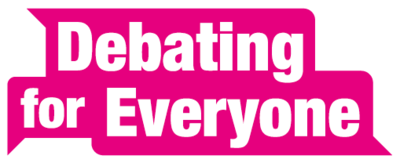
Debating For Everyone | Debating Training for Schools | Set up Debating Club at School | Debating Advice School Students
How to research for debates.

The best debaters are very well informed about the world. They come to preparation time armed with an impressive array of facts, and a deep understanding of the issues. That's because they've read a lot, listened to a lot, watched a lot in the time before the debate; they've done a lot of research. But how can you make sure your research is accurate? How can you be sure that what you have read, listened to and watched is true? The two key things to remember when researching are: 1. Check your sources. 2. Multiply your sources.
1. Check your sources
Not everything written down, either in print or online, is true. Nor is everything that is said true. How can you check whether something is true or not? One way is to consider what kind of source it is. Ask these four questions:
- Who wrote it / said it?
- Why did they write it / say it?
- When was it produced?
- How was it produced?
Who wrote it / said it? The answer to this question will help you identify if the writer / speaker has expertise . People with expertise on a topic are more likely to have accurate information about it. If someone writing or speaking about the impact of climate change is a scientist who has spent years studying the subject, they are likely to have first-hand knowledge and therefore expertise; if they have never studied the science of climate change, their knowledge will be at best second hand. Why did they write it / say it? The answer to this question will help you identify the motivation of the writer / speaker. People have many motivations for writing and speaking. They may want to discover and present the truth, or they may want to advance their own or someone else's interests. An article demonstrating the harm to health of eating fried chicken from fast-food shops every day published by a medical journal is likely to be motivated by a search for the truth about the health impacts of junk food. An article published by a fast-food fried chicken company saying there are no health harms from eating fried chicken from fast-food shops every day is likely to be motivated by a wish to keep people buying fried chicken. When was it produced? When something was written or said changes how you read it or hear it. A book or article written about immigration before the enlargement of the European Union allowed more people from Eastern Europe to come to the UK to work will not consider the impact of this kind of immigration. One written more recently may give the impact of Eastern European immigration more weight, only because it is more recent. How was it produced? How something is written or said will help you evaluate its accuracy. In general, the longer it took to produce, the more accurate it is likely to be. A tweet can be fired off in seconds with no checking, and (if the handle is anonymous) may be beyond the reach of laws against libel (libel means the publication of inaccurate and malicious statements). A longer post on a blog or a clip on YouTube may be a little more considered, but has the same issues about the lack of checking / accountability. An article in a daily newspaper will have been checked by an editor, who will also want to protect the newspaper against legal action for libel, but will have been written to a short deadline. An article in a weekly magazine will have gone through a similar editing process, but will have allowed the author longer to research and compose it. An article in a monthly magazine will have given the author even longer. A published book is likely to have gone through an extensive process of commissioning, editing and proofreading, making it even more likely to be accurate. Of course, it is possible to give completely accurate information in a tweet, and for a published book to be full of lies and inaccuracies. Even so, length of production is a relevant consideration.
Multiply your sources
Investors in the stock market often opt for a 'balanced portfolio'. That is, they buy stocks in many different companies so that the ones that do badly are balanced out by the ones that do well. It's a good idea to do the same with the sources for your facts. If you want to know more about a particular topic, seek out as many different sources of information on it as possible in as many different genres as possible. A Google search for websites might start you off, but then look out for articles in newspapers, magazines and journals, and track down as many relevant books as you can lay your hands on. Use your school, university or local library. Make friends with the librarian - librarians are usually delighted to have the opportunity to show off how wonderful their collection is, and will be pleased to help you with your quest. Be hungry and restless for knowledge. Even if you find yourself reading the same thing twice (or three times), that's no bad thing, as it will help you remember it. And don't just multiply your sources of information. Multiply your perspectives on a topic as well. Topics which are likely to be debated are, by their very nature, going to be controversial, and will be open to many different interpretations - expose yourself to as many of those as you can. Above all, challenge your own preconceptions. If you and everyone you know is convinced that the police are institutionally racist, seek out articles in The Daily Telegraph denouncing political correctness and calling for coppers to be left alone to do their job. If, on the other hand, you and everyone you know is convinced that billionaire heads of tech companies deserve every penny they earn because they add so much value to the world, make yourself read some books by left-wing economists arguing that excessive economic inequality is corrosive for society. Try not to get angry as you read. Try instead to understand why these writers say what they say; try to empathise intellectually with where they are coming from. Imagine as you read that you are debating against them: how would you rebut them? You know you don't agree with them: why? How would you answer them? Reading different points of view may change your mind, or it may not. But you must give people on the other side - on all sides - a fair hearing. It will make you a better debater: you might get assigned the other side of the argument in a debate. What's more, it will make you a better citizen, and a better person.
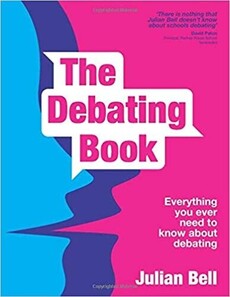
The Debating Book
Written with authority, passion and wisdom, it will tell you everything you ever need to know about debating.
Get In Touch
To contact Julian Bell, please email him on [email protected] . Alternatively, send Julian a message here .
Do you want to start debating, but don't know what to do? Written with authority, passion and wisdom, it will tell you everything you ever need to know about debating. Buy Now

- Debating Training for Schools
- Set up Debating Club at School
- Debating Advice School Students
Website Design by Webfactory
Worksheetplace.com For Great Educators
Debate Printables
A free unit for teaching about debates. This free debate unit has everything needs to hold a debate. Many printables and teaching activities. Classroom debate worksheets for middles grades and high school. Use these worksheet to learn how to debate and how to prepare for a debate. These worksheets support higher level thinking in the classroom. You'll find debate topics, information on how to debate and graphic organizers to help students organize their thinking around their debate topic. Help young learners with debating skills.
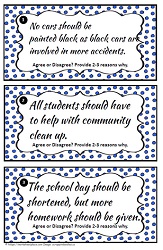
All worksheets are created by experienced and qualified teachers. Send your suggestions or comments .
- PRO Courses Guides New Tech Help Pro Expert Videos About wikiHow Pro Upgrade Sign In
- EDIT Edit this Article
- EXPLORE Tech Help Pro About Us Random Article Quizzes Request a New Article Community Dashboard This Or That Game Popular Categories Arts and Entertainment Artwork Books Movies Computers and Electronics Computers Phone Skills Technology Hacks Health Men's Health Mental Health Women's Health Relationships Dating Love Relationship Issues Hobbies and Crafts Crafts Drawing Games Education & Communication Communication Skills Personal Development Studying Personal Care and Style Fashion Hair Care Personal Hygiene Youth Personal Care School Stuff Dating All Categories Arts and Entertainment Finance and Business Home and Garden Relationship Quizzes Cars & Other Vehicles Food and Entertaining Personal Care and Style Sports and Fitness Computers and Electronics Health Pets and Animals Travel Education & Communication Hobbies and Crafts Philosophy and Religion Work World Family Life Holidays and Traditions Relationships Youth
- Browse Articles
- Learn Something New
- Quizzes Hot
- This Or That Game New
- Train Your Brain
- Explore More
- Support wikiHow
- About wikiHow
- Log in / Sign up
- Education and Communications
- Communication Skills
- Public Speaking
How to Write a Debate Outline
Last Updated: March 5, 2023 Fact Checked
This article was co-authored by wikiHow Staff . Our trained team of editors and researchers validate articles for accuracy and comprehensiveness. wikiHow's Content Management Team carefully monitors the work from our editorial staff to ensure that each article is backed by trusted research and meets our high quality standards. There are 8 references cited in this article, which can be found at the bottom of the page. This article has been fact-checked, ensuring the accuracy of any cited facts and confirming the authority of its sources. This article has been viewed 225,482 times. Learn more...
Debates are a common assignment in high school and college classes where 2 individuals or teams present opposing arguments about a particular issue or question. Although you may feel like you debate people all the time, writing a debate outline requires a bit more research and organization than simply arguing with someone. Fortunately, once you know how to effectively categorize and present the evidence for your argument, writing a debate outline is a relatively straightforward process.
Researching for Your Debate

- Team debates are one of the most common debate forms. In the first half of the debate, each team has two segments to present arguments for their side. In the second half of the debate, each team has two segments to rebut arguments presented in the first half.
- Lincoln-Douglas debates are set up to allow one side to present their arguments, and then the other team to cross-examine them. The second team then presents their arguments and has the first team cross-examine them. Finally, each team has an opportunity for a final rebuttal.

- For example, if the topic of the debate is on the environmental impact of gas cars versus electric cars, gather research from academic journals and consumer watchdogs on carbon emissions, what impact carbon has on environmental degradation, and statements from experts on the topic, such as environmental scientists and car manufacturers.
- If you're writing the debate outline for an assignment and can't pick your own side, focus on gathering as much evidence as possible to strengthen the argument you're tasked with making.
- Whatever argument you ultimately make, make sure that it is logically sound and that you have convincing, relevant evidence that supports it.
- Be sure to note all bibliographical information on your notes.
- For every supporting piece of evidence you find for your case, try to find another piece of evidence to counter it. This will help you build your argument later.
- It is better to include more points than you think you will need, than not doing enough research and lacking evidence.

- For instance, if your most compelling piece of evidence is a graph that shows that gas cars emit twice as much carbon as electric cars, place this at the top of your evidence list.
- If you have a fairly lengthy debate planned, break up your case evidence into categorical sections. For example, you could have legal, moral, and economic support for your case.
- Aim to have a minimum of 3 supporting facts or pieces of evidence in your case outline.
Creating the Basic Outline

- Subdivide information. Main headings will probably consist of arguments, while subheadings will contain different pieces of supporting evidence.
- Use correct symbols. Each level of the outline has a particular symbol to use. The main headings will use Roman numerals (I, II, III, IV). Subheadings use capital letters (A, B, C). Sub-sub headings use Arabic numerals (1, 2, 3). Keep these consistent throughout your outline.
- Indent each level. Indentation helps you follow the line of argument and keeps your outline organized.

- Your thesis statement should explain which side of the debate you'll be taking and why your case is stronger than your opponent's.
- For example, if you're debating whether gas cars or electric cars are cleaner, your thesis statement might be: “Electric cars are cleaner than gas cars.”

- For example, if you're arguing that electric cars are cleaner than gas cars because they produce less carbon dioxide, your first main point would be: “Electric cars produce less carbon dioxide emissions than gas cars.”

- For example, the evidence that electric cars produce less carbon dioxide emissions than gas cars might include statistical information compiled by the Energy Department and the Environmental Protection Agency.

- For example, if you're pretty confident that your opponent will argue that your evidence relies on biased sources, you can prepare a rebuttal to that claim by finding additional evidence to support your argument from a variety of sources.
- Look to find rebuttals for both the individual parts of their argument in addition to the whole of it. This will fortify your position in the debate.
- Many times their argument will be the opposite of yours, so while your argument lists the pros, theirs is listing the cons of a particular value. If you pay attention to this, you will be able to not only prove their side of the argument invalid, but also help to further promote your own.

- Write this more detailed outline as if you were actually speaking in the debate. This will help you to better understand your own argument and come up with logical questions and rebuttals for your opponent.
Avoiding Logical Fallacies

- For example, if you're promoting the abolition of the death penalty, your opponent might commit the straw man by accusing you of lacking sympathy for the families of victims, and that you don't want true criminals to pay for their crimes.

- For example, if you're arguing for legalizing gay marriage and your opponent says that it is a bad idea, because soon enough we will be legalizing polygamy and bestial relationships in all the states.

- For example, if you've presented a well-crafted argument for your case but your opponent has not, they may instead try to call out your bad grades as a rebuttal. Even if this is true, it isn't relevant to the topic of the debate and therefore isn't logically valid.
- Even if your opponent brings personal issues and insults into a debate, you should never do this back to them. Not only is it logically fallacious; it's also widely considered rude.

- For example, if you were to claim that electric cars are “always” cleaner than gas cars, your opponent might point out that a gas car in a carwash is cleaner than an electric car covered in mud. To avoid this fallacy, steer clear of ambiguous words like “always.”

- For example, it would be logically fallacious to argue that the death penalty is the most effective form of punishment just because most people support it.

- For example, your opponent states that as a result, the only two options are to legalize all drugs or to outlaw them.
Community Q&A
- Debates are based on evidence, support, and organization. Do your best to find appropriate resources and to keep your arguments easy to follow. Thanks Helpful 0 Not Helpful 0

- Do not rely on emotional appeals. Though emotional appeals are a powerful motivator for change, debates are based on logic and evidence. Thanks Helpful 2 Not Helpful 0
You Might Also Like

- ↑ https://www.edu.gov.mb.ca/k12/cur/socstud/frame_found_sr2/tns/tn-13.pdf
- ↑ https://learn.stleonards.vic.edu.au/debating/files/2013/08/DEBATING-CHEAT-SHEET.pdf
- ↑ https://www.wittenberg.edu/sites/default/files/media/occ/forms/debate.pdf
- ↑ https://owl.purdue.edu/owl/general_writing/the_writing_process/developing_an_outline/types_of_outlines.html
- ↑ https://valenciacollege.edu/students/learning-support/winter-park/communications/documents/SampleArgumentOutline.pdf
- ↑ https://www.comm.pitt.edu/four-step-refutation
- ↑ https://www.gvsu.edu/cms4/asset/CC3BFEEB-C364-E1A1-A5390F221AC0FD2D/avoiding_logical_fallacies.pdf
- ↑ https://www.palomar.edu/users/bthompson/Fallacies%20of%20Ambiguity.html
About This Article

To write a debate outline, start by writing down your primary argument or the case you are trying to prove. Under your argument, list the supporting evidence so that the most powerful and persuasive evidence is presented first. Then, list potential questions or arguments that may be brought up by the other side, along with different ways to counter them. Finally, organize your outline using headings, subheadings, and bulleted lists, and write out each section in complete, detailed sentences. For more advice, including how to avoid logical fallacies that can hurt or weaken your argument, keep reading. Did this summary help you? Yes No
- Send fan mail to authors
Reader Success Stories
Oluwatoyin Lasisi
Jan 26, 2018
Did this article help you?
Kattina Anglin
Mar 28, 2018

Featured Articles

Trending Articles

Watch Articles

- Terms of Use
- Privacy Policy
- Do Not Sell or Share My Info
- Not Selling Info
Don’t miss out! Sign up for
wikiHow’s newsletter

Choose Your Test
Sat / act prep online guides and tips, 55 great debate topics for any project.
General Education

A debate is a formal discussion about a topic where two sides present opposing viewpoints. Debates follow a specific structure: each side is given time to speak either for or against the topic at hand.
Many students study debate in high school to improve their speaking skills. As a debater, you learn how to clearly structure and present an argument. The skills you develop as a debater will help you on everything from a college admissions interview to a job presentation.
Selecting debate topics is one of the most important parts of debating. In this article, we’ll explain how to select a good debate topic and give suggestions for debate topics you can use.
How to Select Good Debate Topics
A good debate topic is one that lets the participants and the audience learn about both sides of an issue. Consider the following factors when selecting a debate topic:
Interest: Are you interested in the topic? Would the topic be interesting to your fellow classmates, as well as to the audience listening to the debate? Selecting a topic that you’re interested in makes the preparation part of the debate more exciting , as well as the debate more lively.
Argument Potential: You want to choose a debate topic that has solid argument potential. If one side is clearly right, or if there isn’t a lot of available information, you’ll have a hard time crafting a solid debate.
Availability of Data: Data points make an argument more robust. You’ll want to select a topic with lots of empirical data that you can pull from to bolster your argument.
Now that we know how to select a debate topic, let’s look at a list of good debate topics.
Debate Topics Master List
If you’re searching for your next debate topic, here are some suggestions.
Social and Political Issues Debate Topics
- All people should have the right to own guns.
- The death penalty should be abolished.
- Human cloning should be legalized.
- All drugs should be legalized.
- Animal testing should be banned.
- Juveniles should be tried and treated as adults.
- Climate change is the greatest threat facing humanity today.
- Violent video games should be banned.
- The minimum wage should be $15 per hour.
- All people should have Universal Basic Income.
- Sex work should be legal.
- Countries should be isolationist.
- Abortion should be banned.
- Every citizen should be mandated to perform national public service.
- Bottled water should be banned.
- Plastic bags should be banned.
Education Debate Topics
- Homework should be banned.
- Public prayer should not be allowed in schools.
- Schools should block sites like YouTube, Facebook, and Instagram on their computers.
- School uniforms should be required.
- Standardized testing should be abolished.
- All students should have an after-school job or internship.
- School should be in session year-round.
- All high school athletes should be drug tested.
- Detention should be abolished.
- All student loan debt should be eliminated.
- Homeschooling is better than traditional schooling.
- All schools should have armed security guards.
- Religion should be taught in schools.
- All schools should be private schools.
- All students should go to boarding schools.
- Sexual education should be mandatory in schools.
- Public college should be tuition free.
- All teachers should get tenure.
- All school districts should offer school vouchers.

Health Debate Topics
- Healthcare should be universal.
- Cosmetic procedures should be covered by health insurance.
- All people should be vegetarians.
- Euthanasia should be banned.
- The drinking age should be 18.
- Vaping should be banned.
- Smoking should be banned in all public places.
- People should be legally required to get vaccines.
- Obesity should be labeled a disease.
- Sexual orientation is determined at birth.
- The sale of human organs should be legalized.
- Birth control should be for sale over the counter.
Technology Debate Topics
- Social media has improved human communication.
- The development of artificial intelligence will help humanity.
- Individuals should own their own DNA.
- Humans should invest in technology to explore and colonize other planets.
- Governments should invest in alternative energy sources.
- Net neutrality should be restored.
- Bitcoin and other cryptocurrencies should be encouraged or banned.
- Alternative energy can effectively replace fossil fuels.
- Cell phone radiation is dangerous and should be limited.
How to Prepare for a Debate
Once you’ve selected your debate topic, the next step is to prepare for your debate. Follow these steps as you get ready to take the podium.
Read Your Evidence
The most important step to building your debate confidence is to familiarize yourself with the evidence available. You’ll want to select reputable sources and use empirical data effectively.
The more well read on your topic you are, the better you’ll be able to defend your position and anticipate the other side’s arguments.
Anticipate the Other Side’s Arguments
As part of your debate, you’ll need to rebut the other side’s arguments. It’s important to prepare ahead of time to guess what they’ll be talking about. You’ll bolster your own side’s argument if you’re able to effectively dismantle what the other side is saying.
Plan to Fill Your Speech Time
Each speaker at a debate is limited to a certain amount of time. You should plan to use every second of the time that you’re allotted. Make sure you practice your talking points so that you know you’re within the time frame. If you’re short, add in more evidence.
Practice to Build Confidence
It can be scary to take the stage for a debate! Practicing ahead of time will help you build confidence. Remember to speak slowly and clearly. Even if your argument is great, it won’t matter if no one can understand it.
Final Thoughts
Debate is a great way to hone your public speaking skills and get practice crafting and defending an argument. Use these debate topics if you're searching for a focus for your next debate.

What's Next?
Looking for ways to keep the debate going in non-academic life? Then you'll love our list of 101 "this or that" questions to argue over with your friends.
Thinking about how you can use your argumentative skills in a future career? Read up on the five steps to becoming a lawyer to see if that's a path you want to pursue.
Getting ready to take an AP test? Here’s a list of practice tests for every AP exam, including the AP literature exam .
It can be hard to schedule time to study for an AP test on top of your extracurriculars and normal classwork. Check out this article on when you need to start studying for your AP tests to make sure you’re staying on track.
Need more help with this topic? Check out Tutorbase!
Our vetted tutor database includes a range of experienced educators who can help you polish an essay for English or explain how derivatives work for Calculus. You can use dozens of filters and search criteria to find the perfect person for your needs.

Hayley Milliman is a former teacher turned writer who blogs about education, history, and technology. When she was a teacher, Hayley's students regularly scored in the 99th percentile thanks to her passion for making topics digestible and accessible. In addition to her work for PrepScholar, Hayley is the author of Museum Hack's Guide to History's Fiercest Females.
Student and Parent Forum
Our new student and parent forum, at ExpertHub.PrepScholar.com , allow you to interact with your peers and the PrepScholar staff. See how other students and parents are navigating high school, college, and the college admissions process. Ask questions; get answers.

Ask a Question Below
Have any questions about this article or other topics? Ask below and we'll reply!
Improve With Our Famous Guides
- For All Students
The 5 Strategies You Must Be Using to Improve 160+ SAT Points
How to Get a Perfect 1600, by a Perfect Scorer
Series: How to Get 800 on Each SAT Section:
Score 800 on SAT Math
Score 800 on SAT Reading
Score 800 on SAT Writing
Series: How to Get to 600 on Each SAT Section:
Score 600 on SAT Math
Score 600 on SAT Reading
Score 600 on SAT Writing
Free Complete Official SAT Practice Tests
What SAT Target Score Should You Be Aiming For?
15 Strategies to Improve Your SAT Essay
The 5 Strategies You Must Be Using to Improve 4+ ACT Points
How to Get a Perfect 36 ACT, by a Perfect Scorer
Series: How to Get 36 on Each ACT Section:
36 on ACT English
36 on ACT Math
36 on ACT Reading
36 on ACT Science
Series: How to Get to 24 on Each ACT Section:
24 on ACT English
24 on ACT Math
24 on ACT Reading
24 on ACT Science
What ACT target score should you be aiming for?
ACT Vocabulary You Must Know
ACT Writing: 15 Tips to Raise Your Essay Score
How to Get Into Harvard and the Ivy League
How to Get a Perfect 4.0 GPA
How to Write an Amazing College Essay
What Exactly Are Colleges Looking For?
Is the ACT easier than the SAT? A Comprehensive Guide
Should you retake your SAT or ACT?
When should you take the SAT or ACT?
Stay Informed
Get the latest articles and test prep tips!
Looking for Graduate School Test Prep?
Check out our top-rated graduate blogs here:
GRE Online Prep Blog
GMAT Online Prep Blog
TOEFL Online Prep Blog
Holly R. "I am absolutely overjoyed and cannot thank you enough for helping me!”
- Mar 24, 2021
How Should I Research for Debate?
The best debaters are often the best researchers, simply due to the fact that if you find strong evidence yourself, you are far more likely to understand how to use it strategically in the round than if it was sent to you by someone else.
Like all things in debate, strong research skills are built with practice, but we at Debate Resource would like to give you a head start by helping you understand how to effectively use Google and how to effectively read studies. The tips and tricks provided in this article will give you a leg up as a researcher and help you find killer evidence.
Research goals:
To start, we will go over a debater’s goals when researching. We believe that all debate research boils down to five main objectives:
Objective 1: Stockpile evidence in favor of the argument in question
Whenever you find evidence that seems promising, save it! At the beginning, as we have said before, you are just looking for quantity: get good quotes and links into your documents. Later on, you will want to comb through these articles and studies to figure out exactly what they say, but for now just find the evidence, organize it in an efficient way (tip: use hyperlinks! Ctrl+K), and keep researching!
Objective 2: Stockpile evidence against the argument in question
What happens when you find evidence that directly contradicts your argument? Don’t move backward by scrapping your argument altogether; instead, save that evidence to be used on the other side! All you need is to have your “PRO Research Document” and your “CON Research Document” up in 2 tabs, and paste your quotes and links into the applicable doc.
We promise - you will thank yourself later! It is much better to save too many links than to remember you had found that killer evidence early on but you forgot to save it and it’s lost forever.
Objective 3: Identify new warrants
Research isn’t all about finding quotes – it is also about building your topic knowledge and advancing your ability to use unique, nuanced warrants. Whenever you find an author that has a unique take, a link you’ve never heard of before that gets around the most common responses, write it down and use it as a basis for further research. It may even end up as one of the core links in your final case!
Objective 4: Identify new keywords for future research
Oftentimes, research comes down to using the right keywords. This is where jargon is VERY useful! If your topic is about nuclear weapons, you need to know that a keyword like “Weapons of Mass Destruction” or “WMDs” will give additional search results that the competition isn’t looking for. As you find more and more keywords related to the topic, keep writing them down and using them in future Google Searches.
Objective 5: Discover new arguments
Beside talking to your friends and family, reading articles and studies is the best way to discover new arguments and contentions you can use. As you find new arguments, keep writing them down and adding them to your list to research more later, and to find relevant keywords for. Keep building your documents with content – later, you will work on forming them into arguments and formatting them for simple and easy access in-round.
How To Use Google
Everyone who has grown up in the twenty-first century understands the basics of Google search. However, here are some tips that are lesser known that will help you cut through the noise and find the evidence you are actually looking for.
Tip #1 : Use Quotation Marks
Quotation marks are the most powerful tool in Google search and should be used often. When you put a word or phrase in quotes, Google requires every result that comes up to contain that word or phrase. In other words, it sets those words or phrases as highest-priority-keywords, helping you cut through the noise.
While putting individual words in quotation marks is powerful, the beauty of this is you can search for exact phrases. All results will contain that “long-tail keyword” allowing you to find exactly the content you are looking for.
Tip #2 : Time Search
If quotation marks are the most powerful tool Google allows, time search comes in a close second. What’s crazy about time search is almost nobody uses it! It’s very simple to set up a custom date range.
First, enter your search. In the next row under the search bar, you have a variety of options, where you can look for “all,” “news,” “images,” etc. Look all the way to the right, past “settings,” over to “tools.” You will see a drop-down that says “any time.” Click it and scroll all the way down to “custom range.” This is where you put in the precise date range you want your search to filter through.
Why use time search? Usually for 1 of 2 reasons.
First, you likely want to find the most recent articles. If your evidence “post-dates” your opponent’s and you can provide a feasible reason that recency matters with regard to that topic, that is a clear point for you in the judge’s book, and they are likely to trust your evidence over your opponent’s.
Second, you may want to understand an event that happened at a certain period in history, or better yet, how a certain period in history interpreted a certain event. We often suffer from “recency bias,” in which we let the most recent headlines crowd out a deeper, fuller understanding. Time search helps you get around that.
This will build the depth of your understanding. If you can not only explain a topic, but how our understanding of that topic has changed over time, your legitimacy will skyrocket and the judge will want to vote for you because you clearly did your homework.
Tip #3 : File Type PDF
Tired of finding articles from illegitimate sites at the top of your Google results? Enter the phrase filetype:pdf right into the google search bar after your search keywords. The results will be exclusively pdfs.
These pdfs are likely to be academic articles, or articles published by other well-known and legitimate websites. They will also be longer articles, with more content for you to browse and learn from.
Tip #4 : Minus Sign
The minus sign helps you if you keep encountering the same type of wrong result. If a word has multiple meanings and you keep getting stuck with results on the wrong one, you can minus a keyword relevant to that “wrong” interpretation to maximize your chances of getting the right results.
If your keyword is “nuclear” because you’re looking for results on nuclear war, but you keep getting results about nuclear energy, just minus out energy by including in the search bar: “-energy.” Simple as that.
The minus sign doesn’t need to be used too often, but can be powerful in the right circumstances to get the exact results you’re searching for.
Tip #5 : Hotkeys
Finally, we want to provide you with a list of hotkeys to make your Google search process more efficient. Here is a list of helpful hotkeys:
Ctrl F: Find within the page
Ctrl W: Exit Tab
Ctrl Shift T: Reopen most recent closed tab
The most important of these is Ctrl + F. If you aren’t using Ctrl + F multiple times a day to see if the content you really want is within the article you found, you’re probably wasting time.
To end this article, here is an easy step-by-step process to finding strong evidence quickly .
Step 1: Enter the keywords you are searching for into google
Step 2: Add quotation marks around multi-word keywords as well as necessary keywords that must be included in any article you want to read.
Step 3: Past or type “filetype:pdf” into the search bar too, and SEARCH
Step 4: Click on an article or study
Step 5: Use Crtl + F to find any relevant keywords within the study
Step 6: Paste relevant quotes with those keywords into your document and hyperlink the URL to the author name and organization, which you will write down as base text just before the quotation.
Step 7: Repeat!
That’s it, and good luck searchin!
Recent Posts
Ten Tips To Improve Your Crossfire Skills
What Questions Should I Ask To Win Crossfire?
How Should I Decide Which Debate Contentions to Use?
- International
- Schools directory
- Resources Jobs Schools directory News Search

Debate template
Subject: Biology
Age range: 11-14
Resource type: Worksheet/Activity
Last updated
28 January 2019
- Share through email
- Share through twitter
- Share through linkedin
- Share through facebook
- Share through pinterest

This worksheet is designed to help prepare students for a debate lesson.
Can be used in any subject.
Very clearly set out to help students with little experience of debate.
Creative Commons "Sharealike"
Your rating is required to reflect your happiness.
It's good to leave some feedback.
Something went wrong, please try again later.
elainepayne
Empty reply does not make any sense for the end user
Very useful. Thank you.
Report this resource to let us know if it violates our terms and conditions. Our customer service team will review your report and will be in touch.
Not quite what you were looking for? Search by keyword to find the right resource:
debate sheet
All Formats
Resource types, all resource types.
- Rating Count
- Price (Ascending)
- Price (Descending)
- Most Recent
Debate sheet
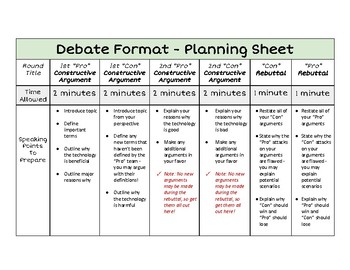
Debate Format Planning Sheet (tool for teaching students to debate )
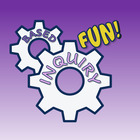
Debate Planning and Tracking Sheet with Winning Tips for Team Debate

Yes or No with Reasons Debate Questions for High-School Kids Writing Sheets

Fall Yes or No with Reasons Debate Questions for High-School Kids Writing Sheets
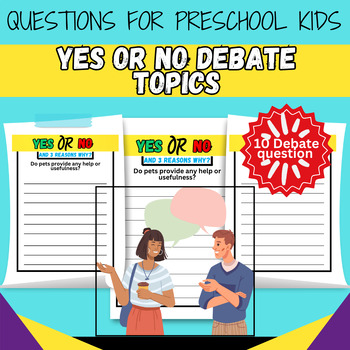
Yes or No with Reasons Debate Questions for Pre-School Kids Writing Sheets
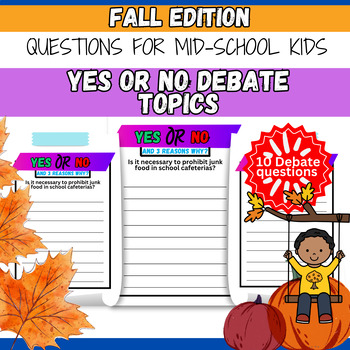
Fall Yes or No with Reasons Debate Questions for Mid-school Kids Writing Sheets

Fall Yes or No with Reasons Debate Questions for Pre-school Kids Writing Sheets

Yes or No with Reasons Debate Questions for middle-School Kids Writing Sheets
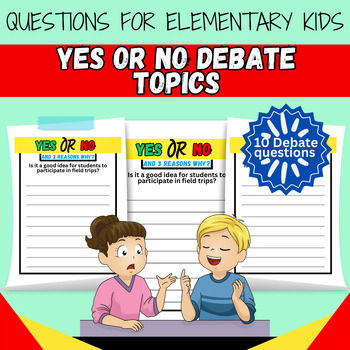
Yes or No with Reasons Debate Questions for Elementary Kids Writing Sheets
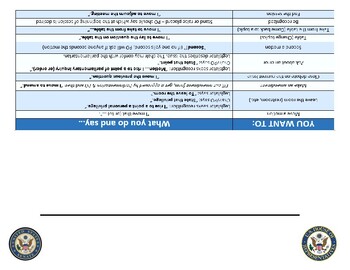
Congress Placard "Cheat Sheet " for Speech & Debate or Classroom

Fall Yes or No with Reasons Debate Questions for Elementary Kids Writing Sheets
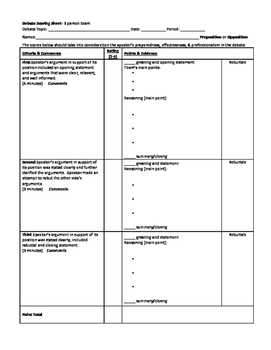
Debate Judging Sheets and Grading Rubrics

2016 Presidential Debate Forms with Dates (four sheets ) BUNDLE

Debate Rubric Resource Editable Debates Presentations Score Sheets

- Google Docs™

Public Speaking Christmas Debate with Assignment Sheet and Rubric

Lincoln Douglas Debate Judge Sheet

Debate sheet for participants

- Word Document File

AP World History Unit 9 Debate Sheet

Song dynasty debate sheet
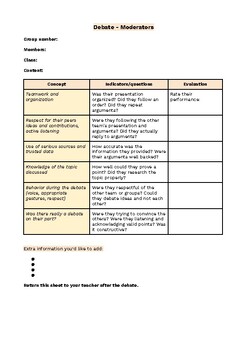
Debate sheet for moderators
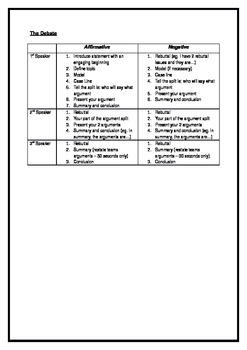
Debating Beginners Handbook - Cheat Sheet - Word Doc so you can edit
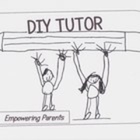
Lincoln Douglas Preparation Sheet Debate
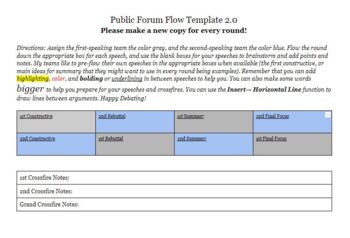
Public Forum Debate Flow Sheet Notes

- Internet Activities
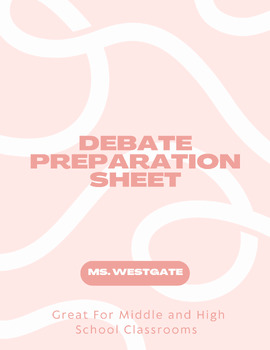
Debate Preparation Sheet - Resource

- We're hiring
- Help & FAQ
- Privacy policy
- Student privacy
- Terms of service
- Tell us what you think
Read our research on: TikTok | Podcasts | Election 2024
Regions & Countries
How hispanic americans get their news, u.s.-born latinos overwhelmingly prefer to get their news in english; about half of immigrant latinos prefer it in spanish.

Pew Research Center conducted this study to understand Hispanic Americans’ habits around news and information, including the languages in which they consume news and their engagement with Hispanic media outlets.
Most of the questions in this report are from Pew Research Center’s 2023 National Survey of Latinos, a survey of 5,078 U.S. Hispanic adults conducted Nov. 6-19, 2023. This includes 1,524 Hispanic adults on the Center’s American Trends Panel (ATP) and 3,554 Hispanic adults on Ipsos’ KnowledgePanel . Respondents on both panels are recruited through national, random sampling of residential addresses. Recruiting panelists by phone or mail ensures that nearly all U.S. adults have a chance of selection. This gives us confidence that any sample can represent the whole population, or in this case the whole U.S. Hispanic population. (For more information, watch our Methods 101 explainer on random sampling.)
To further ensure the survey reflects a balanced cross-section of the nation’s Hispanic adults, the data is weighted to match the U.S. Hispanic adult population by age, gender, education, nativity, Hispanic origin group and other categories. Read more about the ATP’s methodology . Refer to the topline for the questions used for our National Survey of Latinos , along with responses, and to methodology for more details.
The questions about how often people get news from various platforms, which platforms they prefer for getting news, and which social media sites people get news from are from an ATP survey of 8,842 U.S. adults, including 1,193 Hispanic adults, conducted Sept. 25-Oct. 1, 2023. Refer to the topline for t he questions used for this survey , along with responses, and to the methodology for more details.
Pew Research Center is a subsidiary of The Pew Charitable Trusts, its primary funder. This is the latest report in Pew Research Center’s ongoing investigation of the state of news, information and journalism in the digital age, a research program funded by The Pew Charitable Trusts, with generous support from the John S. and James L. Knight Foundation.
The terms Hispanic and Latino are used interchangeably in this report.
Hispanic/Latino Americans, Hispanic/Latino adults , and Hispanics/Latinos are used interchangeably in this report to refer to survey respondents who self-identify as Hispanic or Latino in the United States. They include those who say their race is White, Black, Asian or some other race and those who identify as multiracial. Hispanic/Latino Americans live in the U.S. but are not necessarily U.S. citizens.
U.S. born refers to people born in the 50 states or the District of Columbia.
Immigrant refers to people born outside the 50 states or D.C. For the purposes of this report, immigrants include those born in Puerto Rico or another U.S. territory. Although individuals born in Puerto Rico are U.S. citizens by birth, they are grouped with immigrant respondents because they were born into a Spanish-dominant culture and because on many points their attitudes, views and beliefs more closely resemble those of Hispanics born outside the U.S. than Hispanics born in the 50 states or D.C., and even U.S.-born Hispanics who identify as being of Puerto Rican origin.
Second generation refers to people born in the 50 states or D.C. who have at least one parent born in a different country, Puerto Rico or another U.S. territory.
Third generation or higher refers to people born in the 50 states or D.C. who have two parents born in the 50 states or D.C.
Language dominance is a composite measure based on self-described assessments of speaking and reading abilities. Spanish-dominant people are more proficient in Spanish than in English (i.e., they speak and read Spanish “very well” or “pretty well” but rate their English ability lower). Bilingual refers to people who are proficient in both English and Spanish. English-dominant people are more proficient in English than in Spanish.
“Middle income” is defined here as two-thirds to double the median annual family income for panelists on the American Trends Panel. “Lower income” falls below that range; “upper income” falls above it. Refer to the methodology for more details.
Hispanic news outlets are those outlets that focus on providing news and information specifically to Hispanic audiences. These can include newspapers, radio or TV stations, podcasts, or social media accounts created for and by Hispanic people. Their content could be in Spanish, English, both languages or another language.
Country of origin refers to the country that survey respondents, their parents or their Hispanic ancestors came from.
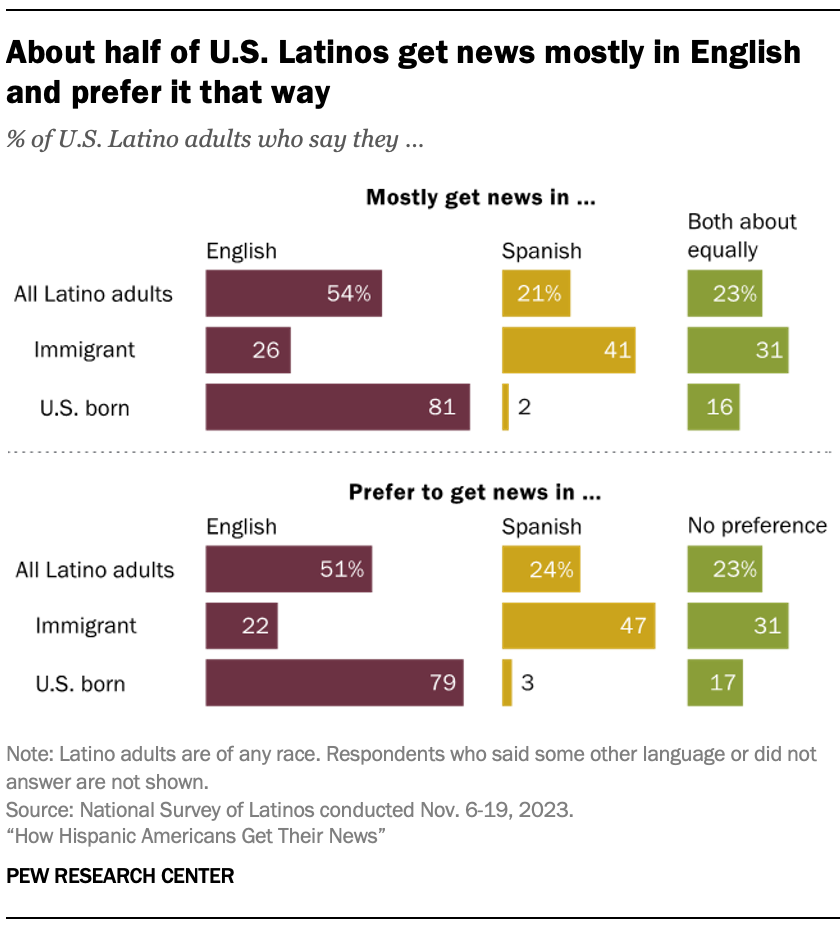
Just over half of U.S. Hispanic adults (54%) get their news mostly in English – far higher than the share who get their news mostly in Spanish (21%). About a quarter of Hispanic Americans (23%) say they consume news in both languages about equally.
There is an almost identical pattern on the question of preferred language for news: 51% prefer to get their news in English, 24% prefer Spanish and 23% say they do not have a preference.
But a new Pew Research Center survey of adults who identify as Hispanic or Latino finds major differences in news consumption habits between U.S.-born Hispanics and those who immigrated from other countries .
While U.S.-born Latinos overwhelmingly get their news in English, and prefer it in English, those born outside the United States have much more varied habits: 41% get their news mostly in Spanish, 26% get it primarily in English and 31% do both about equally. Similarly, 47% of Latino immigrants prefer to get their news in Spanish, while 22% prefer English and 31% do not express a preference.
Among Latino immigrants, those who have spent more years in the U.S. are less inclined than more recent arrivals to get news in Spanish, and more inclined to get it in English. There is little difference in the shares who get news in both languages about equally.
Jump to more information on the languages in which U.S. Latinos consume news.
We asked these questions to better understand how a group that makes up nearly one-in-five Americans stays informed, especially as its demographics and use of Spanish continue to change. Immigrants are declining as a share of all U.S. Hispanics , and the share of Hispanics who speak Spanish at home has also dropped – even though the number of Hispanics who speak Spanish at home has increased due to overall growth in the Hispanic population.
Other key findings about Hispanics’ news consumption include:
Most Latino adults prefer digital devices for news
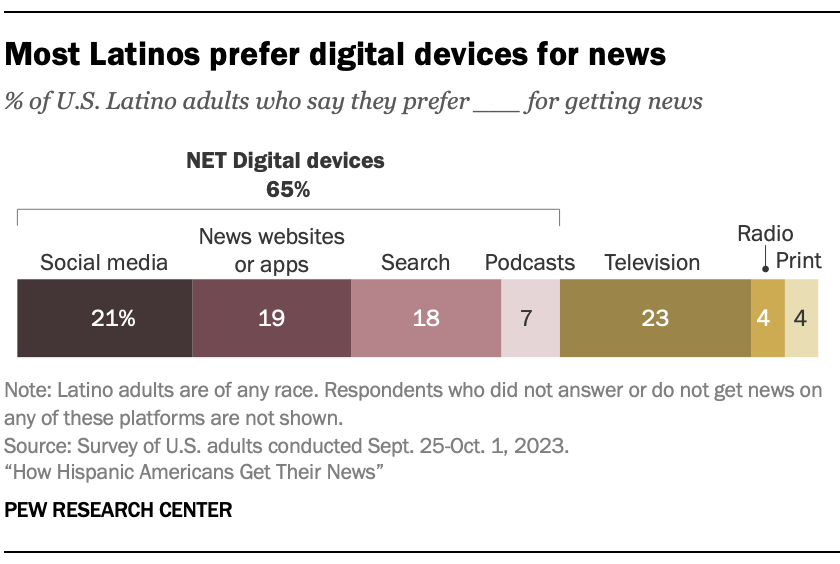
Latinos get their news from a variety of sources, but most say they prefer to use digital devices over other platforms. Nearly nine-in-ten (87%) say they get news from digital devices at least sometimes, and 65% say they prefer this form of news over TV, radio or print. Digital devices have become an increasingly common source for news among Latinos – and among Americans overall – in recent decades, a shift driven by the rise of the internet .
Latinos are more likely than White Americans (55%) and Black Americans (50%) to prefer getting news from digital devices. Latinos also are more likely than White and Black adults to get news from social media, at least in part because Latino adults tend to be younger than other groups, and young adults are more inclined to use social media for news.
Nearly three-quarters of Latino adults under 50 (73%) prefer to get their news on digital devices, including 27% who prefer social media specifically.
Jump to more information on the platforms where U.S. Latinos get news.
Attention to news is declining among U.S. Latinos
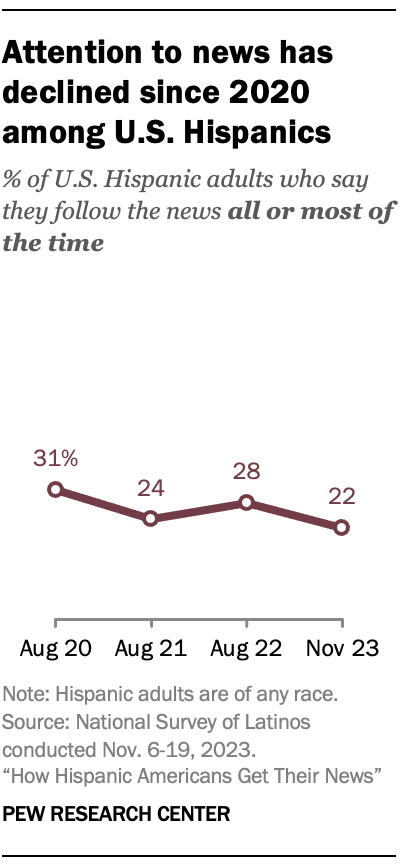
About one-in-five Latino adults (22%) say they follow the news all or most of the time, while an additional 36% follow the news some of the time. The share of Latinos who follow the news all or most of the time has fluctuated in recent years but has dropped by 9 percentage points between 2020 (31%) and 2023 (22%), similar to a pattern seen across the general U.S. public .
In recent years, Hispanic Americans have followed the news less closely than Black and White Americans. Again, the high share of young adults within the Hispanic population plays a role, because young people are less likely to follow the news closely. Among Hispanic adults ages 18 to 29, just 10% say they follow the news all or most of the time – far below the share of Hispanics ages 65 and older who do so (44%).
Jump to more information on U.S. Hispanics’ news consumption habits.
Half of Hispanic adults get news from Hispanic news outlets
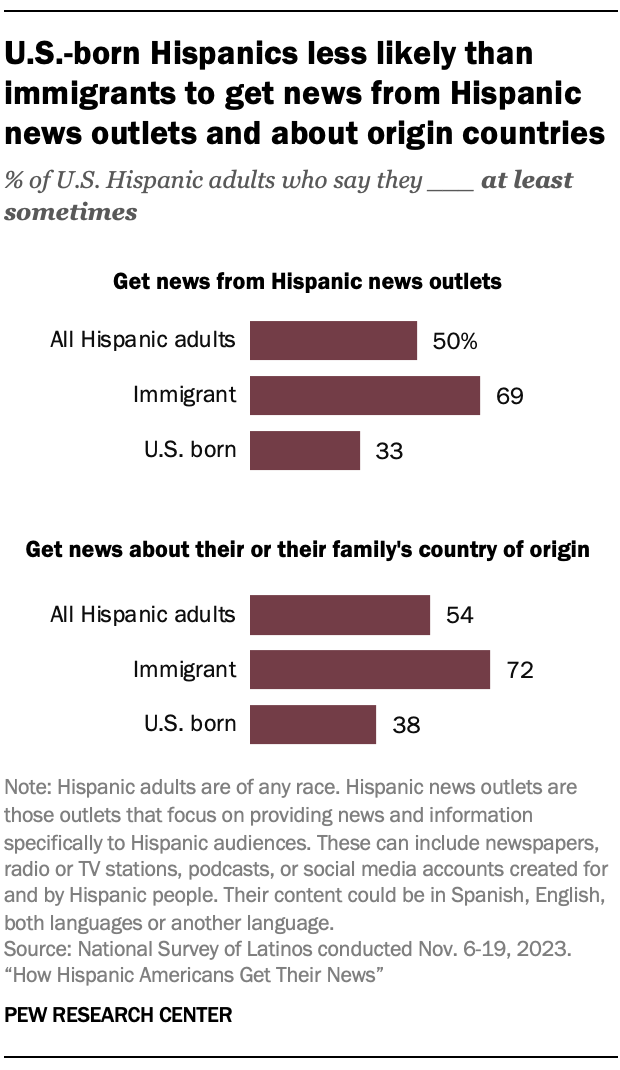
Half of U.S. Hispanic adults say they at least sometimes get news from Hispanic news outlets – those that specifically cater to Hispanic audiences. This includes 21% who say they do this extremely or very often. Just over half of Hispanics (54%) get news about their or their family’s country of origin at least sometimes, including 24% who do this often.
Hispanic immigrants are much more likely than U.S.-born Hispanics to get news from Hispanic outlets and about their origin country. In both cases, about seven-in-ten immigrants say they at least sometimes get these types of news: 69% get news from Hispanic outlets and 72% get news about their country of origin. Among Hispanic adults who were born in the U.S., 33% at least sometimes get news from Hispanic outlets, and 38% get news about their family’s country of origin.
There are further differences among U.S.-born Hispanics: Those whose parents were also born in the U.S. are even less likely than those with one or more immigrant parent to get these types of news.
Jump to more information on Hispanic news outlets and news about Hispanic Americans’ origin countries.
Sign up for The Briefing
Weekly updates on the world of news & information
Report Materials
Table of contents, latinos’ views on the migrant situation at the u.s.-mexico border, 8 facts about black americans and the news, news platform fact sheet, latinos’ views of and experiences with the spanish language, hispanic and black news media fact sheet, most popular.
About Pew Research Center Pew Research Center is a nonpartisan fact tank that informs the public about the issues, attitudes and trends shaping the world. It conducts public opinion polling, demographic research, media content analysis and other empirical social science research. Pew Research Center does not take policy positions. It is a subsidiary of The Pew Charitable Trusts .
- Share full article
Advertisement
Supported by
Study About Purported Ancient ‘Pyramid’ in Indonesia Is Retracted
The study, based on research featured in a Netflix documentary, fueled debate over a site that is used for Islamic and Hindu rituals.

By Mike Ives
Reporting from Seoul
The American publisher of a study that challenged scientific orthodoxy by claiming that an archaeological site in Indonesia may be the world’s “oldest pyramid” says it has been retracted.
The October 2023 study in the journal Archaeological Prospection made the explosive claim that the deepest layer of the site, Gunung Padang, appears to have been “sculpted” by humans up to 27,000 years ago.
The study’s critics say that it incorrectly dated the human presence at Gunung Padang based on radiocarbon measurements of soil from drilling samples, not artifacts. The journal’s American publisher, Wiley, cited that exact reasoning in the retraction notice it issued on Monday.
Gunung Padang is widely considered a dormant volcano, and archaeologists say that ceramics recovered there so far suggest that humans have been using it for several hundred years or more — not anything close to 27,000 years. The pyramids of Giza in Egypt are only about 4,500 years old.
The retraction, based on a monthslong investigation, said that the study was flawed because its soil samples “were not associated with any artifacts or features that could be reliably interpreted as anthropogenic or ‘man-made.’”
Some archaeologists said in interviews that they welcomed the retraction. But the study’s authors called it “unjust,” saying in a statement on Wednesday that their soil samples had been “unequivocally established as man-made constructions or archaeological features,” in part because the soil layers included artifacts.
“We urge the academic community, scientific organizations, and concerned individuals to stand with us in challenging this decision and upholding the principles of integrity, transparency, and fairness in scientific research and publishing,” the authors wrote.
The study ’s lead author, Danny Hilman Natawidjaja, an earthquake geologist, did not immediately respond to a request for comment. Neither did Wiley or the editors of Archaeological Prospection, Eileen Ernenwein and Gregory Tsokas.
One prominent supporter of Mr. Natawidjaja’s research, the journalist Graham Hancock, said in a statement he did not see the retraction as “fair, justified or good science.” He said that instead of issuing a retraction, the journal should have published critiques of the paper, a move he said would have allowed readers to make up their own minds.
“Science should not be about suppression,” said Mr. Hancock, who interviewed Mr. Natawidjaja for an episode about Gunung Padang on “ Ancient Apocalypse, ” his 2022 Netflix documentary series.
The Society for American Archaeology has said that Mr. Hancock’s Netflix show “devalues the archaeological profession on the basis of false claims and disinformation.” He has vigorously rejected that argument, arguing that archaeologists should be more open to theories that challenge academic orthodoxy. Netflix did not respond to a request for comment on the retraction.
People from Indonesia have long traveled to Gunung Padang, a hilltop site dotted with stone terraces, to hold Islamic and Hindu rituals. A domestic narrative portraying it as a very, very old pyramid had support, and financing, from the central government during the administration of President Susilo Bambang Yudhoyono, who left office in 2014. His successor, President Joko Widodo, cut off the funding.
Archaeologists said in interviews on Wednesday that they welcomed the retraction.
One of them, Noel Hidalgo Tan, an archaeologist in Bangkok who had relayed his concerns about the study to Wiley, said that he considered the retraction “entirely appropriate” because the study’s evidence did not support its conclusions.
“It was unfortunate that the paper had to get to this stage,” said Dr. Tan, who works at the Southeast Asian Regional Center for Archaeology and Fine Arts. “But it was better to be retracted than to have nothing said about it at all.”
Dwi Ratna Nurhajarini, the head of the Cultural Heritage Conservation Office in West Java Province, the location of the site, said the study’s conclusions should be re-examined in light of the retraction.
“The structures at Gunung Padang are indeed layered and terraced, reminiscent of civilizations from Indonesia’s distant past,” she said by phone on Wednesday. “But their age might not be as old as suggested.”
Rin Hindryati contributed reporting.
Mike Ives is a reporter for The Times based in Seoul, covering breaking news around the world. More about Mike Ives
We've detected unusual activity from your computer network
To continue, please click the box below to let us know you're not a robot.
Why did this happen?
Please make sure your browser supports JavaScript and cookies and that you are not blocking them from loading. For more information you can review our Terms of Service and Cookie Policy .
For inquiries related to this message please contact our support team and provide the reference ID below.
Mobile Menu Overlay
The White House 1600 Pennsylvania Ave NW Washington, DC 20500
FACT SHEET: President Biden’s 2025 Budget Invests in Science and Technology to Power American Innovation, Expand Frontiers of What’s Possible
President Biden’s Budget makes strategic investments in science and technology (S&T) to ensure that America continues to lead the world in innovation and that S&T breakthroughs benefit all of America. The Budget includes $202 billion for federal research and development (R&D) to tackle the great challenges of our time and achieve our nation’s great aspirations—promoting robust health and ample opportunity for each person in every community, addressing the climate crisis, sustaining global security and stability, and realizing the benefits of artificial intelligence (AI) while managing its risks.
The Budget supports progress on these aspirations by investing $99 billion in the basic and applied research that will drive the development of future cutting-edge technologies, products, and services. It also invests in transformative approaches to harness innovation in health and energy, like the Advanced Research Projects Agency for Health (ARPA-H) and the Advanced Research Projects Agency-Energy (ARPA-E).
Since Day One, the Biden-Harris Administration has worked to deliver the benefits of innovation to every corner of the country. The Budget builds on this work by supporting regional innovation initiatives at the National Science Foundation (NSF) and the Department of Commerce.
A video of today’s White House Office of Science and Technology Policy (OSTP) event that highlights some key aspects of the President’s Budget is available here .
The President’s Budget:
- Advances safe, secure, and trustworthy artificial intelligence. The budget invests in the development of innovative approaches to AI to mitigate threats to truth, trust, and democracy; advance safety and security; protect privacy, civil rights, and civil liberties; and boost economic opportunity for all. The Budget provides robust investments in AI R&D, including $1.6 billion in investments across the National Institutes of Health (NIH) including for the AIM-AHEAD program which works to increase the participation and representation of the researchers and communities that are currently underrepresented in AI and machine learning modeling and applications through mutually beneficial partnerships. It includes $729 million for AI R&D at the National Science Foundation (NSF; a 10 percent increase from 2023 Enacted), including $30 million for the second year of the National AI Research Resource Pilot. It also includes $310 million for DARPA’s AI Forward initiative to research and develop trustworthy technology that operates reliably, interacts appropriately with people, and meets the most pressing national security and societal needs in an ethical manner.
- Bolsters R&D for future economic competitiveness. The Budget supports American innovation and leadership in research and scientific discovery by investing $20.1 billion—a $1.2 billion increase over the 2023 enacted level—in the three CHIPS and Science Act authorized agencies: NSF, the Department of Commerce’s National Institute of Standards and Technology (NIST), and the Department of Energy’s (DOE) Office of Science. The Biden-Harris Administration prioritizes supporting and expanding applied research, experimental development, standards, and related efforts that will facilitate the adoption of a broad range of new technologies. Emerging technology R&D efforts include: $900 million, an increase of 36 percent from 2023, for NSF’s Directorate for Technology, Innovation and Partnerships, which focuses on building partnerships across R&D sectors to translate basic research to products and processes that can benefit the American people; and $606 million at DOE’s Office of Science to integrate supercomputing, AI, and quantum-based technology for developing next-generation high-performance computing systems to ensure U.S. leadership while broadening access to leading-edge computing resources by the community.
- Promotes better health outcomes for every person. With more than $3.4 billion in R&D for Cancer Moonshot-related investments, the Budget supports laboratory, clinical, public health, and environmental health research programs that span five focus areas across more than a dozen departments and agencies. This includes $2.9 billion in discretionary and mandatory resources at the Department of Health and Human Services, which support Cancer Moonshot activities across the National Cancer Institute and ARPA-H. The budget also emphasizes research in suicide prevention and mental health of our veterans with over $135 million for the Department of Veterans Affairs medical care.
- Maintains global security and stability. The Budget includes $92.8 billion in Department of Defense (DOD) R&D to support the development of next-generation defense capabilities. These include critical and emerging technology areas such as AI and autonomy, quantum information science, biotechnology and biomanufacturing, advanced materials, next-generation wireless communication, human-machine interfaces, directed energy, hypersonic system development, integrated sensing and cyber, and advanced microelectronics. DOE’s National Nuclear Security Administration (NNSA) will advance new capabilities for space situational awareness to reinforce arms control and verification missions in support of current treaties, like the Outer Space Treaty. Specifically, the Budget funds the NNSA Space Monitoring and Verification Program at $35 million, advancing our space-based sensing capability.
- Reduces barriers and inequity in S&T while strengthening research. The Budget supports workforce development in science, technology, engineering, and mathematics (STEM) across America with an emphasis on emerging research institutions and historically underserved communities. Key workforce efforts include NSF’s programs to broaden participation of underrepresented groups in STEM education and research programs and DOE’s proposal to build capacity for advancing energy research and developing a new energy workforce at Historically Black Colleges and Universities, Minority-Serving Institutions, Tribal Colleges and Universities, community colleges, and emerging research institutions.
- Tackles the climate crisis and environmental impacts. The Budget supports over $10.7 billion in clean energy innovation activities that are crucial for the nation to achieve President Biden’s goal to reach net-zero greenhouse gas emissions by 2050. Further, to advance our understanding of climate change and its implications, the Budget supports $4.5 billion in climate research activities, including efforts that advance the U.S. Global Change Research Program’s Decadal Strategic Plan. The Budget also advances the development of actionable climate services, consistent with the Federal Framework and Action Plan, to support communities, governments, and businesses in understanding risks, enhancing resilience, and taking action.
Stay Connected
We'll be in touch with the latest information on how President Biden and his administration are working for the American people, as well as ways you can get involved and help our country build back better.
Opt in to send and receive text messages from President Biden.

Federal Judge's Ruling That an Illegal Immigrant Can Carry Arms Ignites Debate in 2A Community

An Obama-appointed federal judge ruled earlier this month that an illegal immigrant was wrongly barred from possessing a firearm.
Prosecutors charged Heriberto Carbajal-Flores in 2020 under a federal law, 18 U.S.C. § 922(g)(5), that prohibits illegal immigrants from carrying guns or ammunition after he was found with a semi-automatic firearm despite knowing he was “unlawfully in the United States.”
“U.S. District Judge Sharon Johnson Coleman rejected two motions to dismiss, but the third motion, based on a 2022 U.S. Supreme Court ruling, triggered dismissal of the case on March 8,” The Epoch Times reports.
In her ruling , the judge said the “noncitizen possession statute…violates the Second Amendment as applied to Carbajal-Flores.”
Lawyers for Mr. Carbajal-Flores had argued in the most recent motion to dismiss that the government could not show that the law in question was “part of the historical tradition that delimits the outer bounds of the right to keep and bear arms.” In 2022, the Supreme Court determined that the U.S. Constitution’s Second Amendment “presumptively protects” conduct that is covered by the amendment’s “plain text.” To justify regulations, governments must show that each regulation “is consistent with this nation’s historical tradition of firearms regulation,” the high court said at the time. “Only if a firearm regulation is consistent with this nation’s historical tradition may a court conclude that the individual’s conduct falls outside the Second Amendment’s ‘unqualified command.’ “Lifetime disarmament of an individual based on alienage or nationality alone does not have roots in the history and tradition of the United States,” Mr. Carbajal-Flores’ lawyers argued. They pointed to several rulings interpreting the Supreme Court’s decision, including an appeals court ruling that declared stripping a man convicted of a nonviolent crime or his gun rights was unconstitutional. The government opposed the motion, noting that neither cited decision applied to illegal immigrants and that the defendant ignored other rulings that did […] But Judge Coleman ruled for the defendant, finding that the laws against untrustworthy people contained exceptions for people who signed loyalty oaths and were deemed nonviolent. ( The Epoch Times )
Recommended

The issue over who qualifies as "the people" is being debated within the Second Amendment community.
As the Supreme Court explained in D.C. v. Heller , “the People” is a term that “unambiguously refers to all members of the political community.” It “refers to a class of persons who are part of a national community or who have otherwise developed sufficient connection with this country to be considered part of that community.” Someone who just entered the United States illegally has not developed any sufficient connection with the country ( Konstadinos Moros )
And on the other side...
Critically, when Heller referred to the “political community,” it did so in the context of dismissing the argument that the Second Amendment was a “collective right,” and not an individual one. The case Heller used to illustrate its point was US v. Verdugo-Urquidez , which declined to apply Fourth Amendment protections to a search by US authorities in Mexico , of the Mexican residence of a Mexican citizen who had no voluntary attachment to the United States . The “political community” illustration in Heller , when it pointed to Verdugo-Urquidez , was illustrating that “the people” is broadly understood in the fundamental rights context, and Verdugo-Urquidez shows an example of something beyond the boundary: an individual in another country with no voluntary connection to ours. In contrast, citizenship at the time of the founding mattered for little aside from seeking political office, and was often limited to white freeholders. There is no historical evidence suggesting that white commoners, the majority of which could not vote, were without the right to arms. To the contrary, early militia acts compelled their armament based on able-bodiedness, not any political hook. I see no way the “political community” dicta in Heller was intended to reverse hundreds of years of precedent where every other right of “the people” was respected within the borders of the United States without regard to whether the individual victim of state action was able to vote. ( Matt Larosiere )
And here is mine. https://t.co/OFjdGGi39w — Kostas Moros (@MorosKostas) March 17, 2024
Join the conversation as a VIP Member

Trending on Townhall Videos
- Biden's Gaza Pier Could Be a Floating Death Trap for U.S. Troops
- Border Security Is Swaying Democrats in This Blue State
- Too Dumb for Harvard? Lemon's Too Dumb for Twitter
- Keep American Troops the Hell Out of Haiti


VIDEO
COMMENTS
the Internet. They will need their Research Handout. Written Preparation - second half of lesson (25-30 minutes) Split the class into the two teams. As a group, each team should now use their research to work through the Research Section on the Debate Worksheet,
Do you want to learn how to start a public forum debate ? This pdf document provides a comprehensive lesson plan for beginners, covering topics such as topic analysis, research, case writing, refutation, and judging. You will also find useful tips, examples, and exercises to improve your skills and confidence in public forum debate .
Open up the debate for comments from all students: • After each side has presented their concluding arguments, you may want to let the rest of the class weigh in, ask questions, or present new evidence. Have students vote to indicate which side presented the most convincing argument: • Ask students to raise their hands in favor of the ...
Download our Fundraising Guide and Additional Fundraising Strategies for Speech and Debate Teams, co-written by Edco and the National Speech & Debate Association. resources. forms-manuals, team-management. 2019-02-25. Free. 2019 NSDA March Board Meeting Agenda. Download a copy of the 2019 NSDA March Board Meeting Agenda.
Debate is an engaging and rigorous way to explore issues that directly impact society -- it also trains your brain to listen carefully, which is important for leaders! ... This assignment sheet describes how to run a culminating debate "tournament" to assess debate skills. Resource 16: Debate Rubric for Outside Judges. Categories: ...
Debate Notes Template: This template provides students with a space to take notes on their research and arguments. Debate Preparation Worksheet: This template helps students organize their arguments and counter-arguments before the actual debate. Debate Planning Sheet: To help students prepare for the actual debate, teachers can provide them ...
06 DEBATE 101: Everything You Need to Know about Policy Debate: You Learned Here NATIONAL SPEECH DEBATE ASSOCIATION I. ARGUMENTS. Arguments are the building blocks of debate. Learning about making arguments the right way is the essence of being well spoken in any walk of life, whether it is in the classroom, the workplace or at the kitchen table.
Debating can be an effective and practical learning tool. Debating allows several different qualities to emerge, including: collecting and organizing ideas, evaluating ideas, seeing logical ...
Rubric for Evaluating Debate Performance 4 3 2 1 Organization The student presented an exceptionally well organized argument. The student presented a well organized argument. The student presented an adequately organized argument. The student presented an unorganized argument. Supporting Facts/Details The student provided 4 or more logically
National Speech and Debate Association. The NSDA provides educational resources, competitive opportunities, and expertise to foster students' communication, collaboration, critical thinking, and creative skills. Education World: It's Up for Debate. Get teaching tips and lesson plans for how to hold effective class debates.
An article in a daily newspaper will have been checked by an editor, who will also want to protect the newspaper against legal action for libel, but will have been written to a short deadline. An article in a weekly magazine will have gone through a similar editing process, but will have allowed the author longer to research and compose it.
Paperless Debate Resources. Paperless Debate Templates are an intuitive way for debaters to digitise the debating process. Templates also allow for an efficient way to cut cards and organise files on a computer for in-round access. One such template is the Verbatim paperless template, found here. More Information about paperless debate can be ...
DEBATE PLANNER. Fill in the sections below to help you. prepare for your arguments for the. debate. DEBATE TOPIC: WHICH SIDE YOU'RE ON: FOR. AGAINST. ARGUMENT 1: ARGUMENT 2: SUPPORTING FACTS: SUPPORTING FACTS. OPENING STATEMENT: STUDENT NAME(S): DATE: / CLOSING ARGUMENTS: w w w . T o p i c s F o r C l a s s . c o m
Use these worksheet to learn how to debate and how to prepare for a debate. These worksheets support higher level thinking in the classroom. You'll find debate topics, information on how to debate and graphic organizers to help students organize their thinking around their debate topic. Help young learners with debating skills.
Research the debate question and decide which side to take. Use quality sources, such as peer-reviewed journals and academic books, to gather the best information possible about your debate topic. Focus on finding relevant facts, statistics, quotations, cases, and examples that are related to the topic at hand. ... On a sheet of paper, write a ...
Need to write an argumentative essay? Preparing for an upcoming debate? ProCon.org has over 100 topics complete with pro and con arguments, quotes and statistics from experts, historical information, and other pertinent research. Abortion - Should abortion be legal? Alternative Energy - Can alternative energy effectively replace fossil fuels?
Debating Research Template. Created by. Miss Alexis' Classroom. This simple, clear template is a MUST have for any Debating Unit!The Word template can be used for team research and will help guide students when forming their arguments.Affirmative and Negative Templates coming soon! Subjects:
Social and Political Issues Debate Topics. All people should have the right to own guns. The death penalty should be abolished. Human cloning should be legalized. All drugs should be legalized. Animal testing should be banned. Juveniles should be tried and treated as adults. Climate change is the greatest threat facing humanity today.
Step 2: Add quotation marks around multi-word keywords as well as necessary keywords that must be included in any article you want to read. Step 3: Past or type "filetype:pdf" into the search bar too, and SEARCH. Step 4: Click on an article or study. Step 5: Use Crtl + F to find any relevant keywords within the study.
Debate template. Subject: Biology. Age range: 11-14. Resource type: Worksheet/Activity. File previews. docx, 36.8 KB. This worksheet is designed to help prepare students for a debate lesson. Can be used in any subject. Very clearly set out to help students with little experience of debate.
Debate Research Worksheet. Previous Next; Peri Frazier. 17 Followers. Follow. Grade Levels. 7 th - 12 th. Subjects. ... Good to give before a class debate so students can write down research, arguments, and counter arguments. Total Pages. 2 pages. Answer Key. N/A. Teaching Duration. N/A. Report this resource to TPT.
EAP Debate Rebuttals Worksheet - Reading and Writing Exerices: Matching, Writing Paragraphs - Speaking Activity: Presenting Rebuttals, Freer Practice - Group Work - Upper-intermediate (B2) - 55 minutes. In this comprehensive debate rebuttals worksheet, students practice formulating and presenting rebuttals.
Instructions for the teacher: 1. Use this sheet as a printout to place on students' desks to help them plan and prepare for a class debate. (I used this with middle school students when debating the "pros" and "cons" of biotechnologies such as cloning or stem cell research.) 2. Review how to read the document with the students.
The terms Hispanic and Latino are used interchangeably in this report.. Hispanic/Latino Americans, Hispanic/Latino adults, and Hispanics/Latinos are used interchangeably in this report to refer to survey respondents who self-identify as Hispanic or Latino in the United States.They include those who say their race is White, Black, Asian or some other race and those who identify as multiracial.
The study, based on research featured in a Netflix documentary, fueled debate over a site that is used for Islamic and Hindu rituals. By Mike Ives Reporting from Seoul The American publisher of a ...
The Federal Reserve will begin in-depth discussions about its balance sheet this week, including when and how to slow the pace at which the central bank drains excess cash from the financial system.
To narrow research gaps on diseases and conditions associated with women's midlife health or that are more likely to occur after menopause, such as rheumatoid arthritis, heart attack, and ...
Further, to advance our understanding of climate change and its implications, the Budget supports $4.5 billion in climate research activities, including efforts that advance the U.S. Global Change ...
An Obama-appointed federal judge ruled earlier this month that an illegal immigrant was wrongly barred from possessing a firearm. Prosecutors charged Heriberto Carbajal-Flores in 2020 under a ...